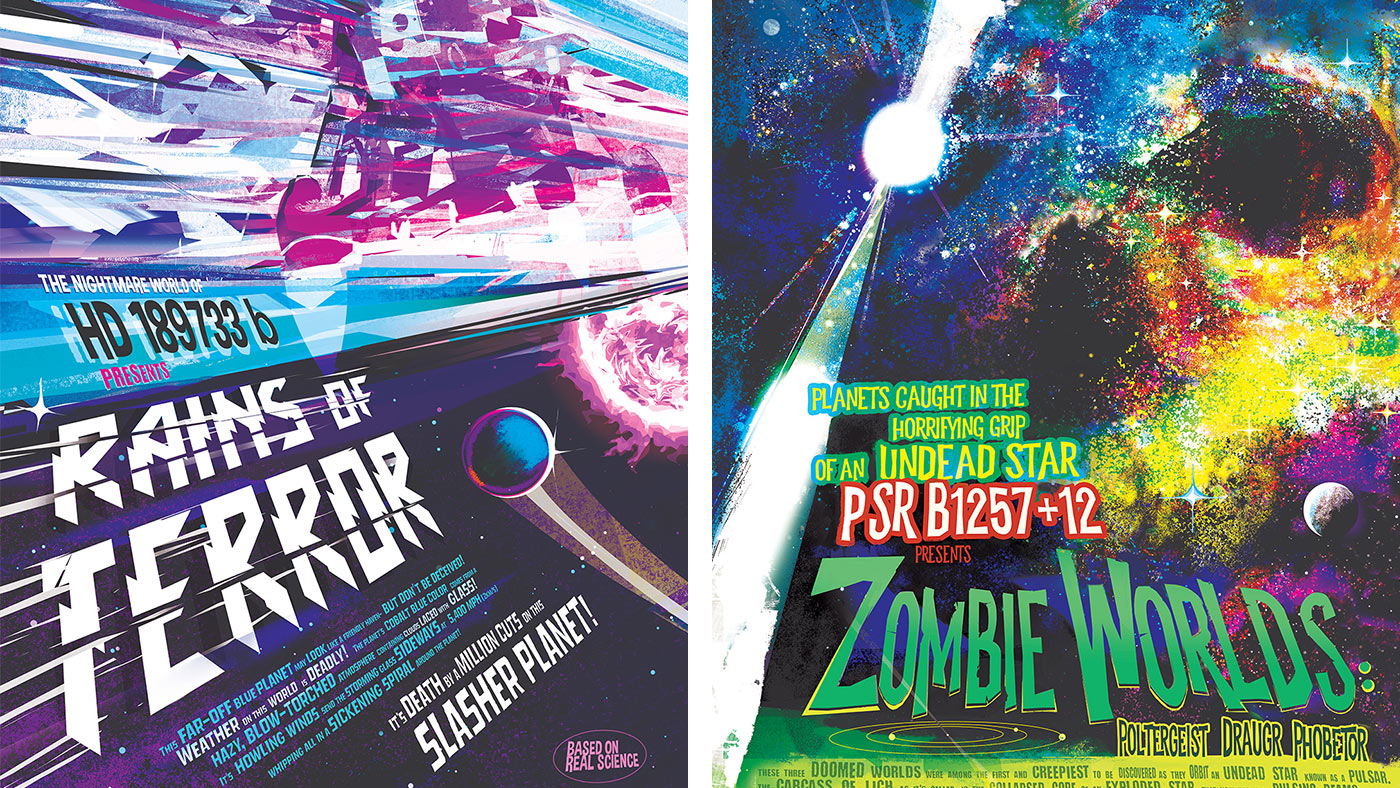
NASA’s newly released posters have a vintage horror movie look just in time for Halloween, and highlight exoplanets in a series called Galaxy of Horrors.
The posters, created in collaboration with scientists and artists at NASA’s Jet Propulsion Laboratory (JPL), are meant to be informative about different exoplanets that have been discovered outside of our galaxy. The colorful posters are free to download.
“In practical terms, I think for many people, the posters are an entryway,” said Gary Blackwood, manager of the Exoplanet Exploration Program, in a press release. “They make exoplanet science cool, and that opens a door for many members of the public — especially students — to learn more about the science behind the posters.”
There’s even a Galaxy of Horrors fake trailer to go along with the retro posters that explains exoplanets further.
One poster is dubbed “Rains of Terror,” a play on the exoplanet’s atmosphere that is full of harsh winds of sand and glass, which NASA refers to as a “hellscape.”
The other poster, called “Zombie Worlds.” focuses on PSR B1257+12, the remains of what used to be a star that isn’t quite dead yet and that has three exoplanets orbiting it. The dead star produces such intense radiation that it can be seen across its galaxy.
The posters showcase that there’s more to exoplanets than finding planets similar to Earth. The exoplanets that harbor treacherous conditions are still equally important discoveries.
“People are often most interested in finding exoplanets that could resemble Earth or potentially support life as we know it,” said Thalia Rivera, an outreach specialist at JPL who led the development of the new poster series. “But there are so many other amazing, mystifying planets out there that are completely unlike Earth and that show us the huge variety of ways planets can form and evolve. My favorite thing about exoplanets is how extreme they can get!”
NASA has confirmed the existence of more than 4,000 planets outside our solar system, like the recently discovered K2-18b Earth-like exoplanet. The sheer number of exoplanets is impressive, but even more so if you take into consideration that before 1992, we couldn’t find any exoplanets.
Editors' Recommendations
- Check out NASA’s skywatching tips for April
- NASA highlights amazing images of ISS shot from the ground
- NASA’s TESS has discovered 5,000 exoplanet candidates
- NASA’s Mars sounds open up whole new world for scientists
- NASA solves mystery of missing Martian rock sample




